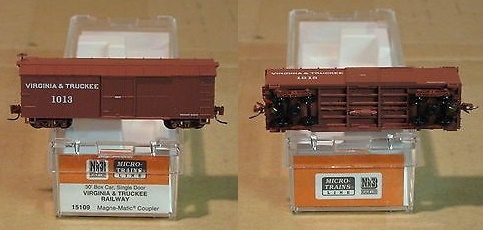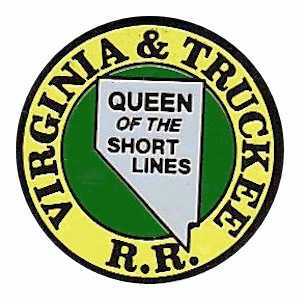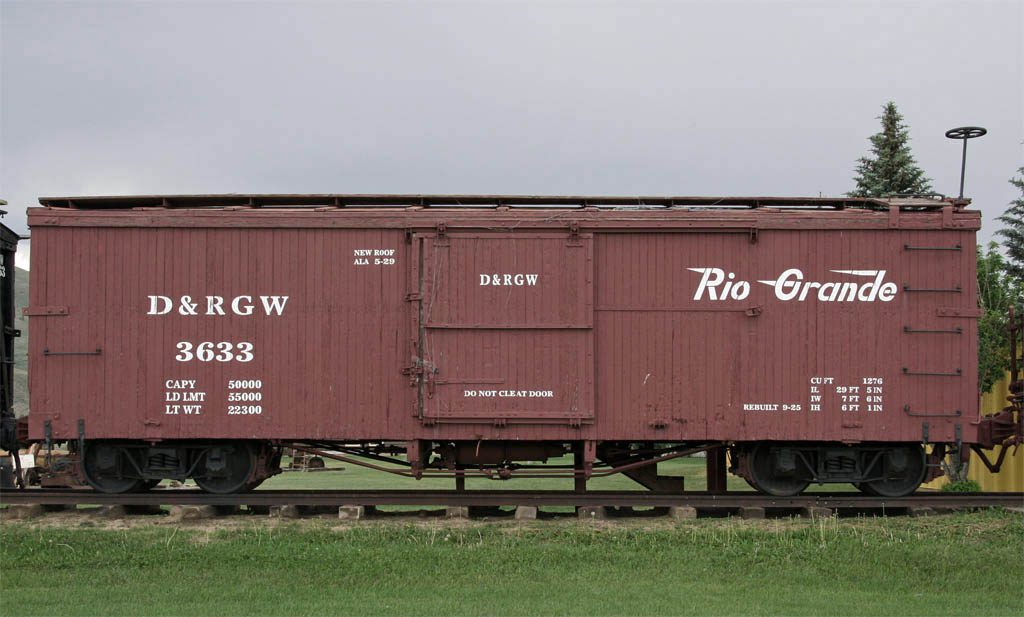Model Information: Micro-Trains introduced a Nn3 narrow gauge range in 1988 that includes a 30' boxcar, a 30' gondola, a 30' flat car and a caboose. The models are re-run occasionally since then.
Prototype History: A class of 750 boxcars, 30ft long and with a capacity of 25 tons, has been delivered to the D&RG by the American Car & Foundry in 1904; they were numbered from 3000 to 3749. In 1926, these boxcars were extensively rebuilt, keeping only a few iron parts from the original boxcars, but the new cars retained the same numbers. A large part of these boxcars remained in revenue service until the end of freight operations on the Rio Grande narrow gauge in 1968. Many boxcars of this class have been preserved today, including 45 on the Durango & Silverton Narrow Gauge Railroad, about twenty in their original condititon on the Cumbres & Toltec Scenic Railroad (plus 22 other converted to passenger cars), 9 at the Georgetown Loop Railroad and another 4 at the Colorado Railroad Museum. All the Rio Grande boxcars were completely made of wood (body and frame), except for numbers 3000-3749 which received a steel roof during their 1926 rebuilding.
Road Name History: The Virginia and Truckee Railroad (reporting mark VT) was built to serve the Comstock Lode mining communities of northwestern Nevada. At its height, the railroad's route ran from Reno south to Carson City, Nevada. In Carson City, the mainline split into two branches. One branch continued south to Minden, while the other branch traveled east to Virginia City. The first section from Virginia City to Carson City was constructed beginning in 1869 to haul ore, lumber and supplies for the Comstock Lode.
The railroad was abandoned in 1950 after years of declining revenue. Much of the rail infrastructure was pulled up and sold, along with the remaining locomotives and railcars. In the 1970s, with public interest in historic railroads on the rise, the old lines were rebuilt by private investors, with an eye towards re-opening the lines.
Today, the privately owned Virginia and Truckee Railroad Company operates as a heritage railroad, headquartered in Virginia City. The present route is 14.1 miles (22.7 km) long. The railroad owns and uses the service mark "Queen of the Short Lines". The V&T Railroad runs up to seven trains per day, many in steam behind locomotive #29, a 2-8-0 Consolidation, or an ex-US Army GE 80-ton diesel from Virginia City from Memorial Day until the end of October each year.
Read more on Wikipedia.
The railroad was abandoned in 1950 after years of declining revenue. Much of the rail infrastructure was pulled up and sold, along with the remaining locomotives and railcars. In the 1970s, with public interest in historic railroads on the rise, the old lines were rebuilt by private investors, with an eye towards re-opening the lines.
Today, the privately owned Virginia and Truckee Railroad Company operates as a heritage railroad, headquartered in Virginia City. The present route is 14.1 miles (22.7 km) long. The railroad owns and uses the service mark "Queen of the Short Lines". The V&T Railroad runs up to seven trains per day, many in steam behind locomotive #29, a 2-8-0 Consolidation, or an ex-US Army GE 80-ton diesel from Virginia City from Memorial Day until the end of October each year.
Read more on Wikipedia.
Brand/Importer Information: Micro-Trains is the brand name used by both Kadee Quality Products and Micro-Trains Line. For a history of the relationship between the brand and the two companies, please consult our Micro-Trains Collector's Guide.
Manufacturer Information:  Micro-Trains Line split off from Kadee Quality Products in 1990. Kadee Quality Products originally got involved in N-Scale by producing a scaled-down version of their successful HO Magne-Matic knuckle coupler system. This coupler was superior to the ubiquitous 'Rapido' style coupler due to two primary factors: superior realistic appearance and the ability to automatically uncouple when stopped over a magnet embedded in a section of track. The success of these couplers in N-Scale quickly translated to the production of trucks, wheels and in 1972 a release of ready-to-run box cars.
Micro-Trains Line split off from Kadee Quality Products in 1990. Kadee Quality Products originally got involved in N-Scale by producing a scaled-down version of their successful HO Magne-Matic knuckle coupler system. This coupler was superior to the ubiquitous 'Rapido' style coupler due to two primary factors: superior realistic appearance and the ability to automatically uncouple when stopped over a magnet embedded in a section of track. The success of these couplers in N-Scale quickly translated to the production of trucks, wheels and in 1972 a release of ready-to-run box cars.
Micro-Trains Line Co. split off from Kadee in 1990 to form a completely independent company. For this reason, products from this company can appear with labels from both enterprises. Due to the nature of production idiosyncrasies and various random factors, the rolling stock from Micro-Trains can have all sorts of interesting variations in both their packaging as well as the products themselves. When acquiring an MTL product it is very important to understand these important production variations that can greatly enhance (or decrease) the value of your purchase.
Please consult our Micro-Trains Collector's Guide

Micro-Trains Line Co. split off from Kadee in 1990 to form a completely independent company. For this reason, products from this company can appear with labels from both enterprises. Due to the nature of production idiosyncrasies and various random factors, the rolling stock from Micro-Trains can have all sorts of interesting variations in both their packaging as well as the products themselves. When acquiring an MTL product it is very important to understand these important production variations that can greatly enhance (or decrease) the value of your purchase.
Please consult our Micro-Trains Collector's Guide
Item created by: Alain LM on 2020-07-23 12:36:45
If you see errors or missing data in this entry, please feel free to log in and edit it. Anyone with a Gmail account can log in instantly.
If you see errors or missing data in this entry, please feel free to log in and edit it. Anyone with a Gmail account can log in instantly.











